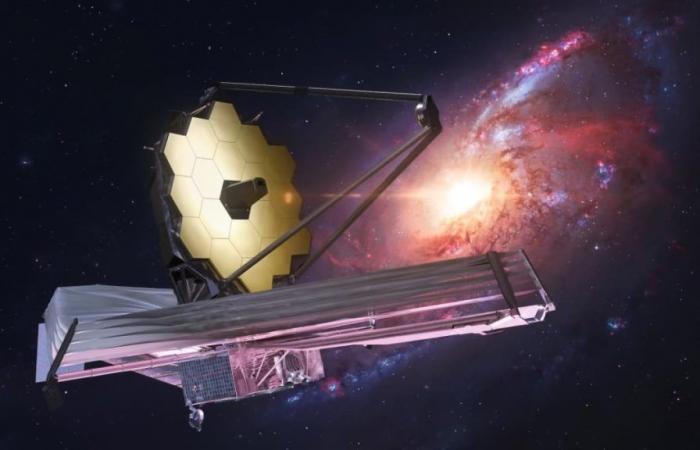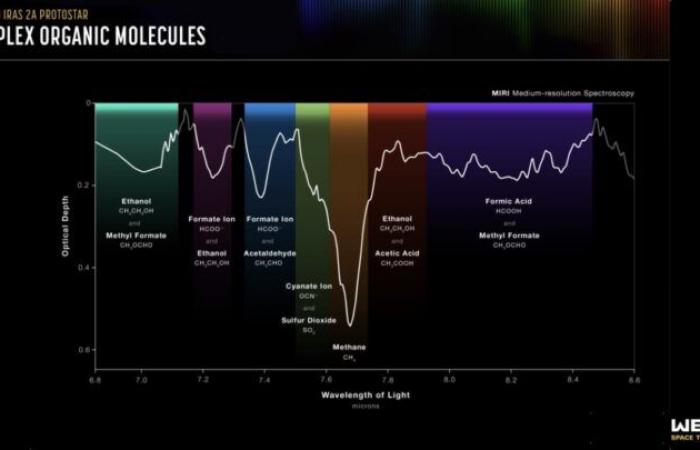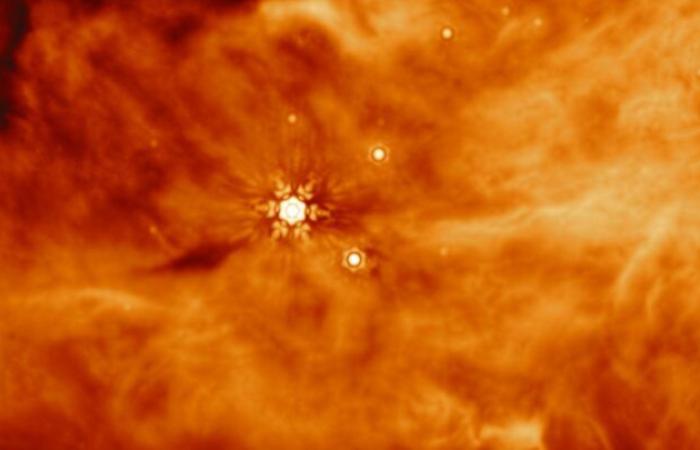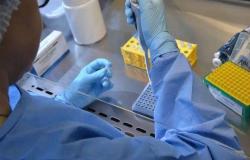The powerful eye of NASA’s James Webb Space Telescope has identified vital chemicals around two young stars. Yes, the telescope found ethanol (the alcohol found in alcoholic beverages) as well as another ingredient found in vinegar. Are these “signs from aliens”?
NASA searches for habitable worlds, with conditions like Earth
Astronomers turned the space observatory, which orbits 1,609,340 kilometers from Earth, to cosmic regions around these protostars, which are so young that they have not yet formed planets. However, they almost certainly will: NASA suspects that almost every star has at least one planet.
As such, in these planet-forming regions, the Webb telescope found "complex organic molecules," including ethanol. Crucially, these ingredients, which form in icy materials in cold space, could one day become part of future solar system objects, including large asteroids that could transport organic molecules and important materials to planets. We remember that much of Earth's water, for example, may have come from asteroid impacts.
The Webb telescope carries instruments, called spectrometers, that can detect the composition of distant objects or places, such as the atmospheres of alien planets. Spectrometers separate the light coming from these objects, similar to a prism. Different elements or molecules absorb different types of light, so the light seen by Webb can discern which chemicals are present and which are not.
The first image below shows the different spectrums of light captured by Webb while observed the distant protostar IRAS 2A. Ethanol was present in different groups of icy materials.
The complex organic molecules identified by the James Webb Space Telescope around the protostar IRAS 2A. Credit: NASA / ESA / CSA / L. Hustak (STScI) // Science: W. Rocha (Leiden University)"
According to NASA, in addition to alcohol, the Webb telescope identified formic acid, methane and probably acetic acid. These are "key ingredients for creating potentially habitable worlds" said the space agency.
A habitable world is one that has the conditions to sustain life — although this does not necessarily mean that there is life there. NASA is currently looking for worlds that could be habitable, some of which may even resemble the ocean-covered Earth.
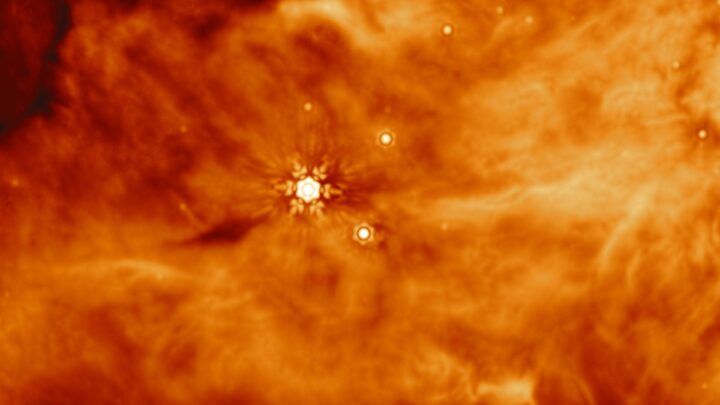
This image was captured by the MIRI (Mid-Infrared Instrument) on NASA's James Webb Space Telescope of a region near the protostar known as IRAS 23385. The image is a single exposure at a wavelength of 15 micrometers, which has been assigned the color orange .
The Powerful Capabilities of the Webb Telescope
The Webb Telescope — a scientific collaboration between NASA, ESA and the Canadian Space Agency — is designed to peer into the deepest cosmos and reveal new knowledge about the early universe. But it's also observing intriguing planets in our galaxy, along with the planets and moons of our solar system.
Here's how Webb is achieving unprecedented feats and will likely continue to do so for decades:
- Giant mirror: Webb's mirror, which captures light, is more than 6.4 meters in diameter. That's more than two and a half times larger than the Hubble Space Telescope's mirror. Capturing more light allows Webb to see more distant and ancient objects. As described above, the telescope is observing stars and galaxies that formed more than 13 billion years ago, just a few hundred million years after the Big Bang.
- Infrared vision: Unlike Hubble, which primarily observes light visible to us, Webb is primarily an infrared telescope, meaning it observes light in the infrared spectrum. This allows us to see much more of the universe. Infrared has longer wavelengths than visible light, so light waves pass more efficiently through cosmic clouds; light doesn't collide as often and isn't scattered as much by these densely packed particles. Ultimately, Webb's infrared vision can penetrate places where Hubble cannot.
- Peek at distant exoplanets: As mentioned previously, the Webb telescope carries specialized equipment, spectrographs, that will revolutionize our understanding of these distant worlds. The instruments can decipher what molecules (such as water, carbon dioxide and methane) exist in the atmospheres of distant exoplanets — whether they are gas giants or smaller rocky worlds. Webb will observe exoplanets in the Milky Way. Who knows what we will discover?
Astronomers have now successfully found Intriguing chemical reactions on a planet 700 light years awayand, as described above, the observatory began observing one of the most anticipated places in the cosmos: the rocky, Earth-sized planets of the TRAPPIST solar system.

